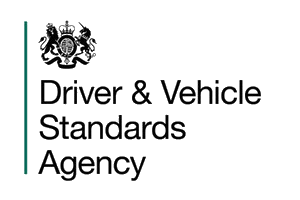
During your driving lessons and after you've passed, one thing that you can be absolutely sure about living in the UK or Ireland is that you will have to deal with a range of changing weather conditions.
 Sometimes the weather will change two or three times during a single journey!
Sometimes the weather will change two or three times during a single journey!
With more extreme weather events now starting to become the norm as a result of climate change, we are seeing more flooded roads, fallen trees and other dangers on the road that drivers in the past have not had to face (at least not to the extent that they are happening now).
In poor weather, always check the forecast before setting out - especially on a long journey.
In extreme weather, for example, when there is heavy snow, ice, fog or flooding and your journey is local, consider a different form of transport - perhaps a bus or the train. If you plan a long trip, allow extra time for the journey or consider postponing it until the weather improves.
This lesson gives an overview of the different weather conditions you will encounter when driving and some basic advice on coping (there is no quiz for this section).
The lesson is for information only - there is no quiz.
You might encounter poor visibility or heavy rain during your driving test, but the DVSA usually cancel tests in dangerous conditions. You are unlikely to encounter extreme snow or ice during your test.
Problems affecting visibility include fog, low light during storms or bright dazzle from the sun during the winter months. Heavy rain will also affect visibility and grip.
You need to be cautious during winter tests. Even though tests are cancelled in extreme weather, there could still be patches of ice or snow on some routes.
 Things the examiner will consider:
Things the examiner will consider:
Use of headlights
Use of wipers
Use of screen demisters
Appropriate speed for the conditions
Anticipation of the actions of other road users, especially pedestrians and cyclists when it is wet, windy or when roads and paths are slippery.

Although sunshine is usually welcome, it can cause severe problems for drivers when it reflects off snow or wet roads.
Bright sunlight can reduce visibility as much as thick fog when it shines onto a dirty windscreen.
Be especially careful when driving into morning and evening sun in the spring and autumn. Keep your speed down and be prepared to stop if you can't see the road ahead. Take extra care when entering tunnels or tree-shaded areas on bright summer days.
Keep your windows and mirrors clean.
If the sun is behind you, it can make it difficult to see traffic in your mirrors; approaching drivers might be dazzled and not see you. Although it might seem strange on a bright day, headlights can help other drivers see you.
Another problem with bright sunlight is that it can make it difficult to see traffic light colours if the sun is shining directly on the lights - in this situation, take extra care and never proceed unless you are 100% sure it is safe.
Sunglasses provide the best solution to prevent sunshine dazzle. You can choose from polarised lenses which reduce reflected glare (good for winter sun and bright wet roads), photochromic lenses that get darker as the light gets brighter, or simple tinted lenses.

Droplets of moisture in the air cause fog. At its worst, you can barely see the bonnet of your car. In these conditions, it would be highly unwise to drive.
The law states that you must use dipped headlights when visibility is less than 100 metres. – it’s also advisable to use front and rear fog lights
Do not use fog lights simply because it is dark, raining, or misty - they can dazzle other drivers. It’s illegal to use them when visibility is more than 100 metres.
Never follow close to the tail lights of another vehicle in fog; this would reduce your available stopping distance in an emergency.
Holding your foot on the brake pedal at junctions will keep the brake lights on; this can help following drivers to see you sooner. But make sure that you take your foot off the brake as soon as there is another car behind, especially at night; otherwise, you will dazzle the following driver with your brake lights.
Opening your window at junctions can help you to hear other traffic. If you have to drive in very poor visibility, use your horn and listen for a reply before emerging from a junction.
Keep your windows and lights clean, and use your windscreen wipers and washers often.
Click here to get detailed information about driving in fog in the DriverActive Drivers' Area.

Extreme weather conditions involving wind are becoming more common as the climate changes. The wind can cause severe problems for road users. Drivers can often be caught unaware.
Inside a warm family car, we are sheltered from the weather to such a degree that we might fail to notice what's happening to others on windy days.
There are always lots of clues to alert us to strong winds, for example, trees swaying, flags and bunting fluttering.
Be especially careful when passing gaps on sheltered roads – where the wind can gust through. A gap in walls or hedges can affect cyclists, or even pedestrians, who could be blown into your path.
Gaps in hills or rows of buildings can affect lorries and vehicles with trailers (for example, caravans). Cars travelling at speed can also be unstable in high wind with sudden 'buffeting'.
On motorways and other open roads, high-sided vehicles can be blown off course and into your lane; in extreme situations, for example, when driving over some motorway viaducts, larries can be blown over.
Perhaps less obvious is the debris the wind can leave behind, branches off trees, dustbins, etc. There could be a tree down just around the next bend.
The more aware you become of the dangers caused by the wind, the less likelihood of being taken by surprise.

Rain affects:
What you can see
What you can hear
Your grip on the road
What you can see:
In wet weather, your windows are more likely to mist up; avoid this by using the car's demisters and air conditioning to keep air circulating.
Windscreen wipers can become overloaded in heavy rain or leave smears on the screen in light rain; make sure you are familiar with the different windscreen wash and wipe settings for your car to help deal with this.
Other vehicles are harder to see in the rain; dipped headlights will make it easier for other drivers to see you.
What you can hear:
The noise from the rain and your air-conditioning or demister fans will make it harder to hear other traffic. You can make extra visual checks through the side windows and door mirrors to help compensate for this.
Your grip on the road:

You can help your car grip the road in wet weather by ensuring that your tyres comply with the legal tread depth requirements (as a minimum). The tread allows water to be displaced and reduces the chance of aquaplaning.
Aquaplaning happens when the tyres can't cope with the volume of water they have to displace.
Clues include light steering or a sudden rise in engine revs in front-wheel drive cars. If you suspect that your car is aquaplaning, ease off the power. If you are using cruise control, switch it off using the controls - don't deactivate cruise control with the brakes in this situation. Your wheels could easily lock, leading to loss of control.
Driving at speed through heavy surface water can cause the tyres to skim the surface of the water - like a water ski - leaving the driver with little or no steering or braking control.
Beware of summer rain.
A light shower after a long dry spell in the summer can leave the road as slippery as ice. You might expect ice in the winter – you are less likely to expect an ice-like surface in the summer!

Perhaps this is the most obvious weather hazard of all. Despite this, many people have accidents in winter conditions every year.
Get ready for winter by ensuring that you prepare your car and yourself. Get your vehicle ready by having it serviced at the start of the cold weather and keeping a winter emergency kit in the boot (boots, warm clothes, shovel, torch, food, extra fuel can, etc.). Get yourself reay by ensuring you have the driving skills needed.
The basic advice for driving in snow and ice is:
Don't drive at all if you can avoid it
Be fully prepared before setting out
Be gentle with all the controls
Use high gears when driving on snow in a manual car (to reduce wheelspin)
Slow down earlier than normal
Leave bigger safety gaps all around
In all cars you need a 'light right foot' when driving on slippery surfaces. This is especially important in automatic and electric cars. Some automatic cars will have a 'winter' or 'snow' mode to help you - these alter how the car changes gears. In an automatic with a manual shift option selecting second to move off can help to reduce wheelspin.
You need to develop the skills to cope with bad weather, but remember that the DVSA will cancel your driving test appointment if the examiner considers the weather too severe to conduct a safe and fair test. A heavy frost can sometimes be enough to cancel an early morning driving test.
Even though your instructor will teach you to cope with poor weather conditions, tests are cancelled in very poor weather because you would not be able to demonstrate a full range of regular driving skills. For example, you might not be able to reach higher speeds on dual-carriageways or open roads.
For detailed information about driving in winter conditions click here to visit Winter Driving in the DriverActive Drivers' Area .